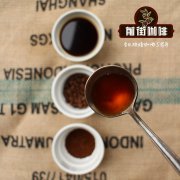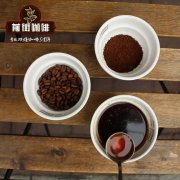Will the packaging materials of raw coffee beans affect the flavor of coffee beans? what is the best packaging for raw coffee beans?

Sensory degradation of raw coffee beans may cause significant financial losses to producers, traders and roasters. However, although a certain degree of degradation is inevitable over time, the materials of coffee packaging may have a significant impact on the shelf life and quality of coffee beans.
Jute, high barrier plastic, vacuum: which is really the best? How much effect does the material actually have on beans? How do we measure it? Let's see.
Review of Green Coffee Packaging Materials
Some of the most common materials are linen, permeable plastics, high barrier plastics and vacuum.
Sack
Canvas made from natural fibers extracted from plants, jute or jute is the most traditional material used to make coffee bags. This is an environmentally friendly option; according to the Food and Agriculture Organization of the United Nations, it is "100% biodegradable, recyclable and therefore environmentally friendly." It is also durable and relatively cheap, making it by far the oldest coffee packaging material.
However, it does not provide moisture or oxygen protection-these are two factors related to poor coffee quality and even defects such as mold. The bag is permeable.
In addition, jute bags traditionally hold 60 kilograms of coffee (70 kilograms in some countries or regions). At the same time, plastic bags and container linings can store 1 to 20 tons of mung beans. Depending on the batch stored or shipped, the manufacturer may decide to choose a larger and therefore more efficient storage option.
Ordinary plastics
Plastic storage is most commonly made of polyethylene or polypropylene, ranging from 60kg bags to large bags and container linings. Compared with jute, this material is cheaper and more resistant to moisture and gas, but still has permeability.
High barrier plastics
Professor Fl á vio Meirabo é m is an agronomic engineer who specializes in vegetable production. He has devoted himself to the study of coffee for the past few years. High-barrier bags are "packages with different components and structures that prevent the exchange of gas and water between the interior and the atmosphere," he said. Its packaging is highly impermeable. "
Although high barrier bags are more expensive than other types of packaging, they are designed to maintain the quality of coffee for a long time by preventing chemical reactions with moisture and oxygen. You can find high barrier packaging in all sizes, including container linings.
Vacuum
After vacuum packaging, coffee should also be stored in impervious plastic bags. Then, in addition to sealing and isolating the raw coffee, negative pressure is generated to remove all air.
It is generally believed that multi-layer vacuum packaging is the most effective way to maintain the quality of raw coffee. However, due to the high cost, this method is usually only used for samples or small batches of special coffee.
Important Notice :
前街咖啡 FrontStreet Coffee has moved to new addredd:
FrontStreet Coffee Address: 315,Donghua East Road,GuangZhou
Tel:020 38364473
- Prev

Coffee roasting Why Coffee roasting is important to learn what knowledge is needed for roasting
Coffee beans are seeds that ripen in coffee cherries. They are then processed and dried into coffee beans. Before baking, coffee beans are green and have the smell of tofu and grass. In fact, raw coffee beans don't smell like coffee at all. When we bake coffee, we produce 8 to 1000 different aroma compounds. These compounds give the coffee a flavor. Through baking analysis, I
- Next

Coffee brewing utensils | the history of AeroPress Philharmonic pressure the birth of the World AeroPress Championships
The AeroPress doesn't look like a coffee brewer, like an infusion needle. It is made by a sports toy manufacturer best known not for coffee but for its Frisbee. Somehow, however, AeroPress has become one of the most iconic coffee brewing methods in the world. Tools of the World Coffee Championships, the World AeroPress Championships (WAC); even
Related
- Beginners will see the "Coffee pull flower" guide!
- What is the difference between ice blog purified milk and ordinary milk coffee?
- Why is the Philippines the largest producer of crops in Liberia?
- For coffee extraction, should the fine powder be retained?
- How does extracted espresso fill pressed powder? How much strength does it take to press the powder?
- How to make jasmine cold extract coffee? Is the jasmine + latte good?
- Will this little toy really make the coffee taste better? How does Lily Drip affect coffee extraction?
- Will the action of slapping the filter cup also affect coffee extraction?
- What's the difference between powder-to-water ratio and powder-to-liquid ratio?
- What is the Ethiopian local species? What does it have to do with Heirloom native species?

